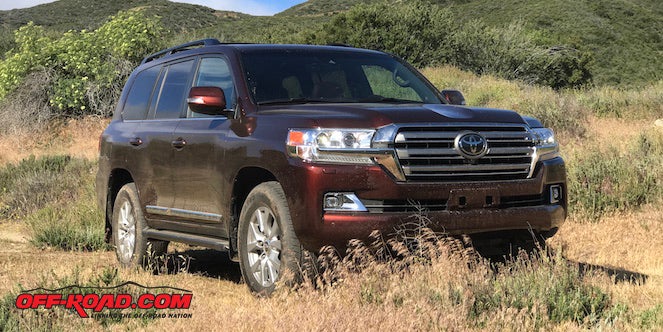
There are more than 40 brands offering 230-some nameplates in America today. Not a single one is a direct Land Cruiser competitor. So what is the Land Cruiser's mission?
It's not aimed at the towing crowd. A $50,000 full-size half-ton anything can tow more than the Land Cruiser's 8,100 lbs. It's not for hauling people. A Sequoia, or any other full-size SUV, offers more interior volume, with at least $20,000 left over. It's not for brand snobs, as Toyota offers the nearly identical and vastly more popular Lexus LX for those people. And no, it's not even for the radical off-road enthusiast. There are Wranglers, Tacomas, 4Runners, and Raptors with off-road capabilities to match the impressive Land Cruiser.
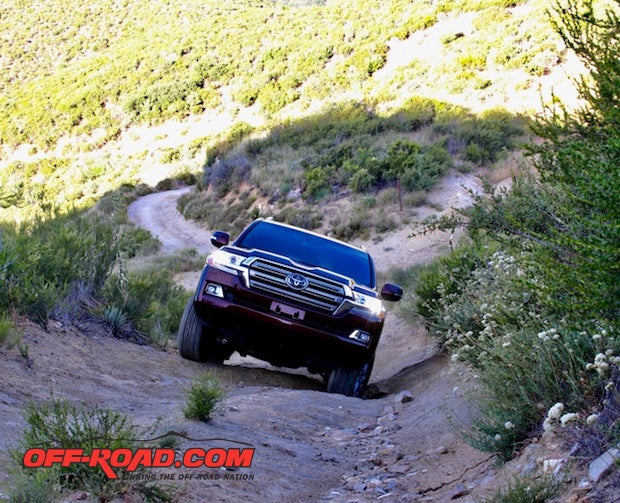
The market analysis justifying the Land Cruiser is contained somewhere deep inside Toyota's North America's product planning offices in Plano, Texas. But until a disgruntled employee or careless contractor leaks the file, we will simply need to speculate.
The Land Cruiser appeared in commercial quantities in the 1950's and from there went on to earn its reputation for go-anywhere durability. I can personally attest to the utility and capability of the 70-Series Land Cruiser based on my time in a high-roof troopie that shrugged off poor driver decisions in Malawi (always check water crossings before going wheels wet) and baboons (there is a fine line between curiosity and malevolence). But today's North American spec Land Cruiser originated with the J50, which bifurcated the Land Cruiser lineup back in 1967. Thereafter, the Land Cruiser badge would be placed on a growing range of light commercial vehicles (J20/30/40/70), as well as on easier to live with yet highly capable passenger-oriented SUVs (J50/60/80/90/120/150/100/200).
None of these products were designed for the North American market. And today's Land Cruiser is no different. It receives minor adaptions to confirm to the peculiarities of our market. But at 112 inches, its wheelbase is four to 10 inches shorter than other full-size SUVs. And its width and overall length are likewise three-quarter size. Sure, it has Toyota's 381 horsepower 5.7L gas V8 and a speedo that reads in mph, but these alterations hardly conceal a vehicle as close to African spec as you will find on a dealer lot in North America. This is one of the few unadulterated foreign market vehicles journalists and enthusiasts pine for.
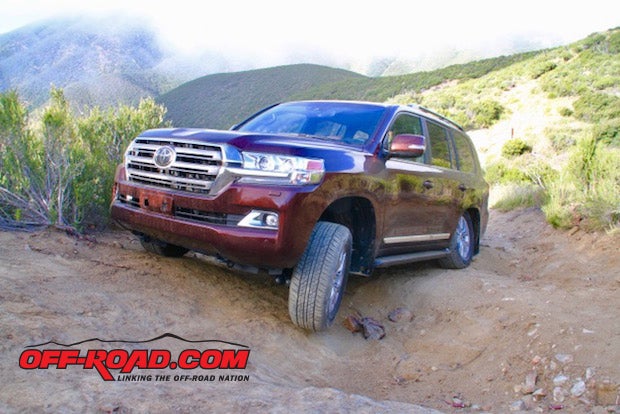
The average Toyota dealer sells seven of these rigs, annually.
That's not because it's bad. It's good. In fact, it's great. Just don't try to lump it into a comparison with any other vehicle available in America today.
The current generation Land Cruiser dates to 2008. In 2016 Toyota executed a refresh including a new grill, rear end treatment, eight-speed transmission, Kinetic Dynamic Suspension System (KDSS), and the latest Entune multimedia interface. The new visage is more nuanced and delicate to this reviewer's eye. But who cares what it looks like, it's a form follows function product with a no-nonsense reputation to uphold. Sculpting its body like a F86 simply wouldn't be right. Any beauty in the Land Cruiser's exterior is conferred by the knowledge of what this rig can do.
Inside, the story is less utilitarian. This Land Cruiser is equipped for comfort. And all the goodies are present, without the need to option it up. It's an all or nothing affair including heated and cooled power seats, touch screen navigation, 14-speaker JBL sound, power steering wheel adjustment, park assist, blind spot monitoring, LED headlights, and more. This is nothing like the truck-come-tractor 70-Series I drove in Africa. Apply some Lexus logos, upgrade the leather, blow out the audio system and it could have been the Lexus LX.
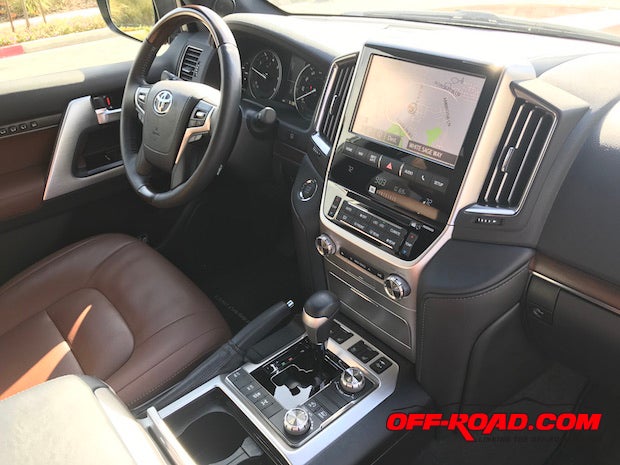
Unlike other full-size SUVs, the Land Cruiser was not designed with an on-road bias backed up by secondary off-road capability. No, this vehicle was designed around a duty cycle that would rattle a Sequoia, Tahoe, or Armada to pieces at 40,000 kilometers. And it shows in the Land Cruiser's on-road manners. They are in a word, unfortunate. Every vehicle presents compromises. For the Land Cruiser it's pavement. The brakes are non-linear. They feature an inflection point when slowing through 30mph where they become progressive and haul the big SUV to a stop with unwanted abruptness. After a week with the big Toyota its brakes did not grow on me.
Moreover, Land Cruiser drivers should not be in a hurry. Despite its modest dimensions, it is as heavy or heavier than any other full-size 4X4 SUV. It even out-weighs its notoriously portly near-peer the LR4. Acceleration, steering, and cornering are languid. The Land Cruiser is the tortoise of cars. It tells its driver, take your time, there's no rush. Just follow that Avalon in the right lane.
Dirt, sand, and mud are home for the Land Cruiser. But it's not due to a personality transformation. The Toyota is like your blunt opinionated cousin who entertains at Thanksgiving but can't seem to get ahead professionally. The Land Cruiser hasn't changed; it's simply a matter of context, and off-highway is its preferred venue. Washboard, a reliably uncomfortable test for most SUV's, is no problem. The Toyota does not approach washboard like a Raptor, which smoothes the bumps through speed and internal-bypass wizardry. The Land Cruiser takes them head-on with a workman-like approach befitting its heft and near six-digit price. Boulders, water, rutted out off-camber inclines, the Land Cruiser doesn't care.
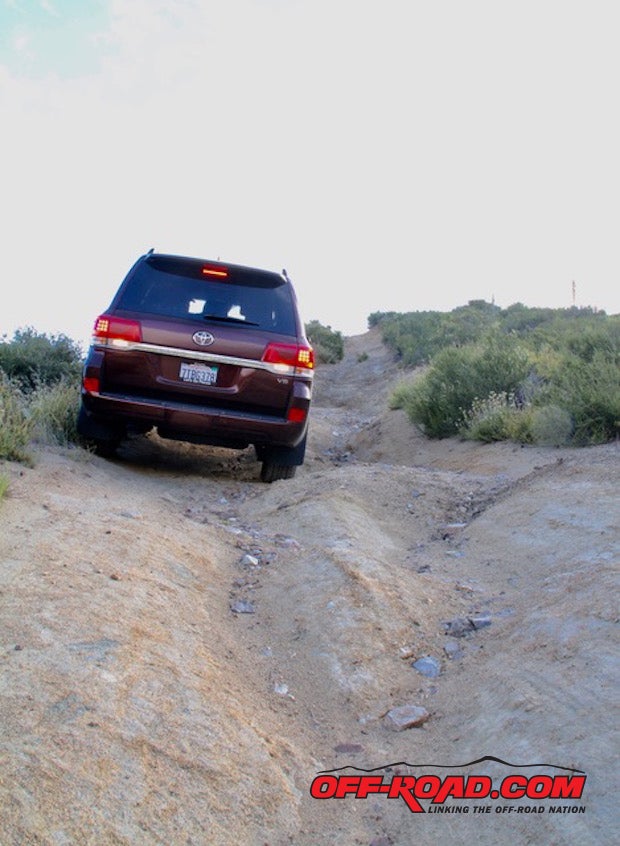
We took the Land Cruiser up scenic Oriflamme Canyon, east of San Diego. This moderate to challenging 11 mile route climbs out of the Anza-Borrego Desert into San Diego backcountry. A quarter of the way up the trail on a section of trail cut into a steep barren hillside we encountered our first real obstacle. A CJ2 sized boulder that fell from above and lodged itself across half of the already narrow single track. The decision was simple. Back down the trail or squeeze between the boulder and the equally unforgiving hill-face while executing a slight leftward pivot to avoid upper-body damage. The Land Cruiser is not a small rig, but we knew Wranglers had successfully navigated the obstacle. With only a couple extra inches of girth versus the Jeep, we decided we could make it.
From there the track got nasty. But nothing our rig's clearance and a dose of prudence couldn't handle. That said, this trail would not be an appropriate test route for a Sequoia or Expedition. Some recent rains made for a modest water crossing, something of a rarity for wheelers in San Diego. And around mile eight the peak obstacle came into view. The steep, uneven, and heavily rutted Stairway to Heaven offers one the chance to summit the route's 4,150 foot high point. Or, you can just walk it, enjoy the view, then cruise the last couple of easy miles to Highway 78.
With a center locking diff, multi-terrain select, crawl control, modest all-terrain Dunlops on off-road appropriate 18 inch wheels, an impressive 32 degree approach angle, a decent 21 degree breakover, and a healthy 24 departure angle, the Land Cruiser is exactly the kind of rig to tackle this short of technical climb. And it needed all the articulation and traction is could muster. We did find the limit of its departure angle in a deeply rutted set of craters with off-camber, high-centering risk. The back end stroked the dirt but shrugged it off on its way to the top. Yes, this is just the kind of rig to enjoy such shenanigans in.
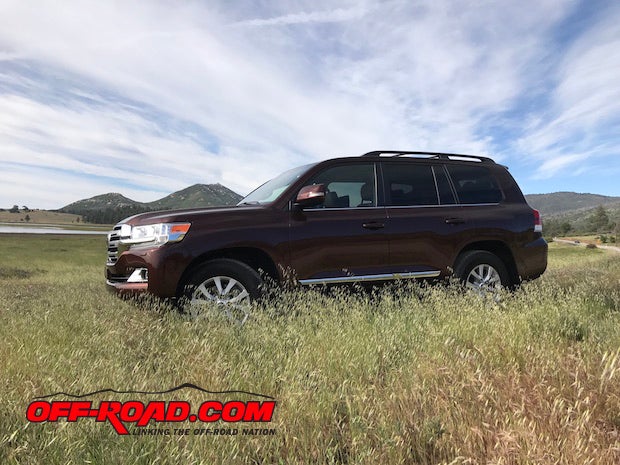
Land Cruiser starts at $84,325. Four-wheel drive, the 5.7-liter V8, and everything else is standard. Select from six exterior and two interior colors. That's it. The MSRP on our tester was $85,520, including a $1,195 delivery processing fee. Advertised fuel economy is 13 city, 18 highway. Observed fuel economy was 14.2 mpg.
So who is the Land Cruiser for? It's for oil and mine managers, the middle-eastern middle-class, NGO country directors, and well-off Australians who want to do the Outback in style. It is not for us. It is too small and expensive to compete with other full-size SUVs. It is too uncompromising and plebian to compete with premium SUVs. And it is far too expensive to compete with other off-road focused offerings. In America, Mercedes sells more G-Wagons and Audi more A8's than Toyota does Land Cruisers. But as leisurely as the Land Cruiser is on-road it is equally brilliant off-road. And I applaud those who toss convention aside and put one of these stubbornly unapologetic SUVs in their garage.
But I fear there are not enough of you to keep the nameplate alive in North America. The departure of this storied and immensely capable SUV from our market would be a shame. Please go buy one.


 Your Privacy Choices
Your Privacy Choices